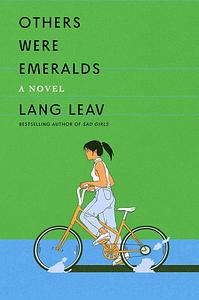Take a photo of a barcode or cover
Oh my- this is a MASTERPIECE.
I feel so blessed I selected this randomly off a shelf at the public library. Never heard of the author before, and it wasn’t even promoted. It’s like it called to me, like the universe needed me to read this.
I hope this book gains all the love and praise and attention it deserves.
I felt like I knew these characters, and their small Australian town in the 90s. It was vividly written with some of the most real and unique characters. There’s themes in here I’ve never seen adequately portrayed before now- especially Brigette and Sying’s characters. I see myself in both of them, I see others I know in them. And yet I feel I rarely read about characters like that. I would read a whole second novel from Sying’s perspective. The author nails emotional loneliness, the special love of female friendship, and the angst of finding a place in the world while surrounded by trauma.
Just wow.
Could not recommend more.
I feel so blessed I selected this randomly off a shelf at the public library. Never heard of the author before, and it wasn’t even promoted. It’s like it called to me, like the universe needed me to read this.
I hope this book gains all the love and praise and attention it deserves.
I felt like I knew these characters, and their small Australian town in the 90s. It was vividly written with some of the most real and unique characters. There’s themes in here I’ve never seen adequately portrayed before now- especially Brigette and Sying’s characters. I see myself in both of them, I see others I know in them. And yet I feel I rarely read about characters like that. I would read a whole second novel from Sying’s perspective. The author nails emotional loneliness, the special love of female friendship, and the angst of finding a place in the world while surrounded by trauma.
Just wow.
Could not recommend more.
emotional
reflective
medium-paced
Plot or Character Driven:
Character
Strong character development:
Yes
Diverse cast of characters:
Yes
Flaws of characters a main focus:
Yes
Do I have anything worth saying? Perhaps not. The book has already faded from me, leaving no lingering pulse. Its prose, however, is undeniable—poetic without indulgence, lyrical yet disciplined, rich in imagery while often pellucid. The cadence is deft. The voice, a tether: pretty, precise, and true.
The novel wrestles with displacement, memory, and cultural hybridity—how the children of refugees learn to shape themselves from fragments of two worlds. To be Cambodian-Australian in the 1990s is to exist between languages, between silences, between the inherited grief of homeland and the uneasy belonging in diaspora. This in-between is written not as abstraction but as lived contradiction: the characters do not speak with one voice, nor should they. Some rage, some retreat, some endure with quiet stubbornness. Their humanity lies in their divergence; they are not archetypes of suffering, but individuals—sometimes insufferable, sometimes tender, always struggling to make sense of fractures both personal and historical.
The work is not without fault. The first half overstretches, luxuriating too long in its textures. By contrast, the latter half skates forward, arriving at closure with undue haste. Emotional depth emerges, yes, but at times at the expense of narrative momentum. Additionally, the characterisation feels uneven: a multitude of figures is introduced, yet several—most notably Tin—are left underdeveloped, denied the fullness of being. Though marketed as adult fiction, its register frequently tilts toward YA; the immediacy of feeling and the adolescent tilt of perception may surprise readers expecting otherwise.
Still, for all its unevenness, the book’s achievement is real: it renders exile as an interior geography, maps grief with patience, and makes the small, quotidian acts of remembering feel consequential.
The novel wrestles with displacement, memory, and cultural hybridity—how the children of refugees learn to shape themselves from fragments of two worlds. To be Cambodian-Australian in the 1990s is to exist between languages, between silences, between the inherited grief of homeland and the uneasy belonging in diaspora. This in-between is written not as abstraction but as lived contradiction: the characters do not speak with one voice, nor should they. Some rage, some retreat, some endure with quiet stubbornness. Their humanity lies in their divergence; they are not archetypes of suffering, but individuals—sometimes insufferable, sometimes tender, always struggling to make sense of fractures both personal and historical.
The work is not without fault. The first half overstretches, luxuriating too long in its textures. By contrast, the latter half skates forward, arriving at closure with undue haste. Emotional depth emerges, yes, but at times at the expense of narrative momentum. Additionally, the characterisation feels uneven: a multitude of figures is introduced, yet several—most notably Tin—are left underdeveloped, denied the fullness of being. Though marketed as adult fiction, its register frequently tilts toward YA; the immediacy of feeling and the adolescent tilt of perception may surprise readers expecting otherwise.
Still, for all its unevenness, the book’s achievement is real: it renders exile as an interior geography, maps grief with patience, and makes the small, quotidian acts of remembering feel consequential.
Graphic: Racial slurs, Racism, Grief
Moderate: Child abuse, Domestic abuse
Minor: Rape
emotional
informative
reflective
sad
fast-paced
dark
emotional
medium-paced
Plot or Character Driven:
A mix
Strong character development:
Yes
Loveable characters:
Yes
Diverse cast of characters:
Yes
Flaws of characters a main focus:
Yes
Better than I thought. The plot twist at the 3/4 was very surprising.
emotional
reflective
medium-paced
emotional
informative
sad
medium-paced
Plot or Character Driven:
A mix
Strong character development:
Yes
Loveable characters:
Yes
Diverse cast of characters:
Yes
Flaws of characters a main focus:
No
dark
emotional
reflective
sad
tense
medium-paced
Plot or Character Driven:
Character
Strong character development:
Yes
Loveable characters:
Complicated
Diverse cast of characters:
Yes
Flaws of characters a main focus:
No
emotional
hopeful
mysterious
reflective
sad
tense
medium-paced
Plot or Character Driven:
A mix
Strong character development:
Yes
Loveable characters:
Yes
Diverse cast of characters:
Yes
Flaws of characters a main focus:
Yes
emotional
hopeful
reflective
sad
medium-paced
Plot or Character Driven:
A mix
Strong character development:
Yes
Loveable characters:
Complicated
Diverse cast of characters:
Yes
Flaws of characters a main focus:
Yes
emotional
sad
medium-paced
Plot or Character Driven:
A mix
Strong character development:
Yes
Loveable characters:
Complicated
Diverse cast of characters:
Yes
Flaws of characters a main focus:
Yes
I chose to read this book because I really like the author’s poetry. I appreciated the professional writing. It didn’t feel ‘amateur’. I also found the teenage relational dynamics to be realistic to life as a teenager. The plot twists genuinely surprised me and I’m not sure if it’s because it’s unbelievable or because it was genuinely a plot twist. When I think of it in terms of life truly does happen, this makes sense to me.
A coming of age story that experiences the daily dramas of being a teenager and the accompanying tumultuous emotions, while simultaneously grappling with racism, trauma, and things too big for kids that age. Had me feeling something for those characters.
A coming of age story that experiences the daily dramas of being a teenager and the accompanying tumultuous emotions, while simultaneously grappling with racism, trauma, and things too big for kids that age. Had me feeling something for those characters.
Moderate: Domestic abuse, Racism






